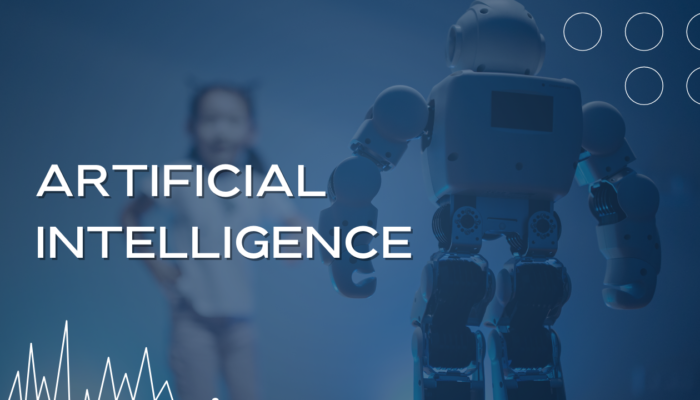Towven.com – Neurotechnology is a fascinating field that delves into the mysteries of the brain, aiming to understand its complexities and harness its potential for the benefit of humanity.
In this article, we’ll embark on a journey through the realms of neurotechnology, exploring its applications, implications, and the exciting possibilities it holds for the future.
Welcome to the world of neurotechnology, where science fiction meets reality, and the mysteries of the brain are unraveled.
Have you ever wondered what goes on inside your head? How thoughts form, memories are stored, or emotions arise?
Neurotechnology seeks to answer these questions and more, offering insights into the most complex organ in the human body it is the brain.
Understanding Neurotechnology
Neurotechnology is a multidisciplinary field that combines neuroscience, engineering, computer science, and other disciplines to understand and interact with the nervous system.
Its primary goal is to develop tools and techniques for studying, monitoring, repairing, augmenting, or controlling neural activity. Here’s a breakdown of key aspects:
- Neuroscience Fundamentals: Understanding the structure and function of the nervous system is foundational. This involves studying neurons, neural circuits, brain regions, and how they interact to produce behavior, cognition, and consciousness.
- Brain Imaging: Neuroimaging techniques such as fMRI (functional magnetic resonance imaging), EEG (electroencephalography), MEG (magnetoencephalography), and PET (positron emission tomography) allow researchers to observe brain activity non-invasively. These methods are used in both research and clinical settings to study brain function and dysfunction.
- Neural Recording and Stimulation: Techniques for recording neural activity include microelectrode arrays, patch clamp recordings, and calcium imaging. Stimulation methods, such as transcranial magnetic stimulation (TMS) and deep brain stimulation (DBS), are used to modulate neural activity and treat neurological and psychiatric disorders.
- Brain-Computer Interfaces (BCIs): BCIs enable direct communication between the brain and external devices, bypassing traditional pathways like muscles or nerves. They have applications in assistive technology, prosthetics, gaming, and communication for individuals with disabilities.
- Neurofeedback: This technique involves real-time monitoring of brain activity, typically through EEG, and providing feedback to the individual to help them learn to self-regulate their brain function. It has potential applications in treating conditions like ADHD, anxiety, and epilepsy.
- Neural Prosthetics: These are devices that replace or augment lost or impaired neural function. Examples include cochlear implants for hearing loss, retinal implants for vision loss, and brain-controlled robotic limbs for amputees.
- Neuropharmacology: Understanding how drugs interact with the nervous system is crucial for developing treatments for neurological and psychiatric disorders. This includes both traditional pharmacology and emerging fields like optogenetics, which uses light to control neurons genetically modified to be sensitive to light.
- Ethical and Societal Implications: Neurotechnology raises important ethical questions related to privacy, consent, cognitive enhancement, and the potential for misuse or unintended consequences. Ethical considerations are essential in guiding the responsible development and application of neurotechnologies.
By integrating knowledge from these various fields, neurotechnology aims to deepen our understanding of the brain and nervous system and develop innovative solutions for improving human health and augmenting human capabilities.
Applications of Neurotechnology
1. Brain-Computer Interfaces
Brain-computer interfaces (BCIs) represent a remarkable fusion of neuroscience and engineering, enabling direct communication between the brain and external devices.
Imagine controlling a computer, prosthetic limb, or even a wheelchair using nothing but your thoughts. BCIs hold immense promise for individuals with disabilities, offering newfound independence and autonomy.
2. Neuroprosthetics
Neuroprosthetics are artificial devices that replace or enhance the function of impaired neural systems.
From cochlear implants that restore hearing to retinal implants that provide vision, neuroprosthetic devices are transforming the lives of countless individuals with sensory or motor deficits, offering them the ability to perceive the world in new ways.
3. Neuroimaging
Neuroimaging techniques allow researchers to peer inside the brain, mapping its structure and activity with unprecedented precision.
Technologies such as functional magnetic resonance imaging (fMRI) and electroencephalography (EEG) provide invaluable insights into brain function, aiding in the diagnosis and treatment of neurological disorders.
4. Cognitive Enhancement
Cognitive enhancement technologies aim to improve various aspects of cognitive function, such as memory, attention, and problem-solving.
While still in its infancy, cognitive enhancement holds the potential to enhance learning outcomes, boost productivity, and even mitigate age-related cognitive decline, opening up new frontiers in education and workforce optimization.
Ethical Considerations
As with any powerful technology, neurotechnology raises important ethical questions and concerns.
Issues surrounding privacy, consent, and the potential for misuse must be carefully addressed to ensure that neurotechnological advancements are deployed responsibly and ethically, safeguarding the rights and well-being of individuals.
Here are some key areas of concern:
- Privacy: Neurotechnology, particularly brain-computer interfaces (BCIs), can potentially access highly sensitive information about individuals’ thoughts, emotions, and intentions. Protecting the privacy of this data is paramount, as unauthorized access could lead to serious invasions of personal autonomy and privacy. Robust encryption and strict access controls are necessary to safeguard neurodata from unauthorized access.
- Consent: Obtaining informed consent is crucial when using neurotechnology, especially in research and medical settings. Participants must fully understand the potential risks and benefits of neurotechnological interventions and provide voluntary consent without coercion. Moreover, individuals should have the right to withdraw consent at any time, and mechanisms for ensuring ongoing informed consent should be established.
- Autonomy and Agency: Neurotechnology has the potential to influence or manipulate individuals’ thoughts, behaviors, and decision-making processes. This raises concerns about preserving individuals’ autonomy and agency. It’s essential to ensure that neurotechnological interventions respect individuals’ capacity for self-determination and do not unduly infringe upon their freedom of thought and action.
- Equity and Access: As with many advanced technologies, there is a risk that neurotechnological advancements could exacerbate existing social inequalities. Access to neurotechnology and its benefits should be equitable, ensuring that marginalized communities are not further disadvantaged. Efforts to address disparities in access to healthcare, education, and resources are essential to promote fairness and social justice.
- Misuse and Abuse: Neurotechnology can potentially be misused for malicious purposes, such as surveillance, manipulation, or coercion. Safeguards must be implemented to prevent unethical applications of neurotechnology and mitigate the risk of harm to individuals and society. This may involve regulatory oversight, ethical guidelines, and public awareness campaigns to promote responsible use and discourage misuse.
- Long-term Implications: The long-term societal and ethical implications of widespread adoption of neurotechnology are complex and multifaceted. As neurotechnological capabilities continue to advance, it’s essential to anticipate and proactively address potential ethical challenges, including issues related to identity, privacy, human enhancement, and the nature of consciousness itself.
Addressing these ethical considerations requires interdisciplinary collaboration among researchers, policymakers, ethicists, and other stakeholders.
By engaging in thoughtful dialogue and implementing appropriate safeguards, we can ensure that neurotechnological advancements are deployed responsibly and ethically, benefiting individuals and society as a whole.
Future Prospects
The future of neurotechnology is both exhilarating and uncertain, as researchers continue to push the boundaries of what is possible.
From decoding the neural basis of consciousness to developing innovative therapies for neurological disorders, the potential applications of neurotechnology are limited only by our imagination.
Conclusion
In conclusion, neurotechnology represents a transformative force in the quest to understand and unlock the secrets of the brain.
By harnessing the power of technology to explore the inner workings of the mind, we stand poised on the brink of a new era of discovery and innovation, where the boundaries between man and machine blur and the potential of the human brain knows no bounds.
FAQs
What are the ethical implications of neurotechnology?
Ethical considerations in neurotechnology revolve around issues such as privacy, consent, and the potential for misuse. It is essential to establish robust ethical frameworks to ensure that neurotechnological advancements are deployed responsibly and ethically.
How does neurotechnology benefit individuals with disabilities?
Neurotechnology, such as brain-computer interfaces and neuroprosthetics, offers individuals with disabilities newfound independence and autonomy by enabling direct communication between the brain and external devices, allowing them to control computers, prosthetic limbs, and other assistive technologies using their thoughts.
What are some promising applications of neuroimaging?
Neuroimaging techniques, such as fMRI and EEG, have diverse applications, including the diagnosis and treatment of neurological disorders, mapping brain function, studying cognitive processes, and even decoding neural patterns associated with thoughts and emotions.
How might cognitive enhancement technologies shape the future of education and workforce optimization?
Cognitive enhancement technologies hold the potential to enhance learning outcomes, boost productivity, and mitigate age-related cognitive decline, thereby revolutionizing education and workforce optimization. However, ethical considerations regarding equity, access, and unintended consequences must be carefully addressed.
What exciting developments can we expect in the future of neurotechnology?
The future of neurotechnology holds boundless possibilities, from decoding the neural basis of consciousness to developing innovative therapies for neurological disorders. As technology continues to advance, so too will our understanding of the brain, unlocking new avenues for exploration and discovery.







